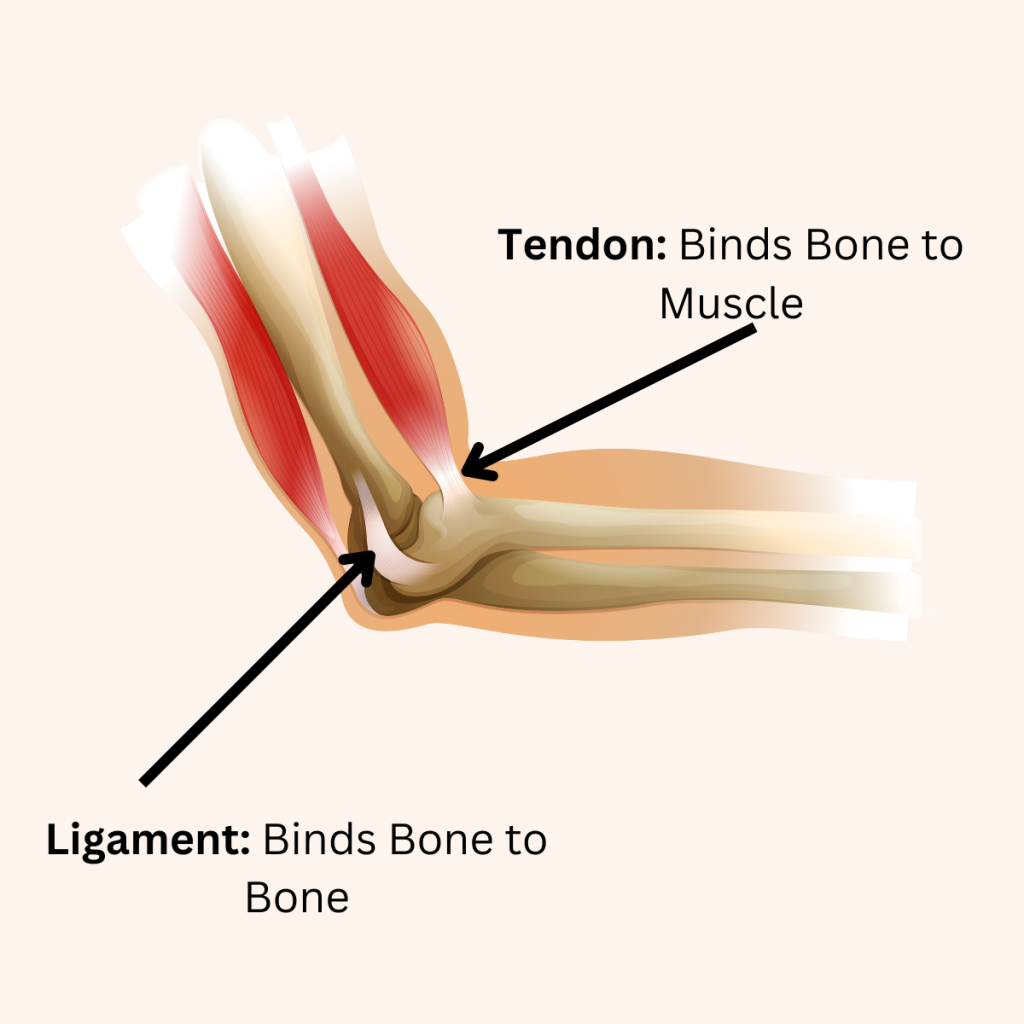You may have heard these common terms for tissues in the body- tendons and ligaments. In fact, you may have injured one or the other in the past. The question is, do you know the differences between tendon and ligament injuries?
How do tendons and ligaments work?
The primary difference between tendons and ligaments is simple:
- Tendons hold the bones & muscles together
- Ligaments attach bones together
Both tendons and ligaments are bands made up of collagen. They work together to ensure stability within the body. This is probably the last thing you’ll think about when you have an injury. However, it’s important to understand the differences between a tendon and a ligament so you can heal quickly and effectively! If you are active, this will especially apply to you.

Ligaments
Generally, ligaments are more flexible than tendons. They have elastic fibers that enable joint movement. Whenever a ligament is torn or overextended, then it results in what’s commonly known as a sprain. The most common areas for a sprain are the ankles, wrists, and knees. These injuries often happen fast and unexpectedly as a consequence of trauma. For example, a fall, blow, or sometimes even moving your body wrong. If you experience a sprained ligament, you will most likely have noticeable symptoms. Usually, this includes swelling, bruising, and pain around the area.
Tendons
Tendons are strong like ligaments, but are a little more susceptible to tears. Their responsibility is to pull bones into movement. As opposed to a sprain, a torn or overextended tendon is known as a strain. The back, foot, and leg are popular body parts affected by strains. You can expect to strain a tendon by overuse. When this happens, you will experience similar symptoms as a sprain like swelling & pain. If you workout, play a sport, or participate in a repetitive movement that stresses the muscle, then you may be at risk of tearing a tendon. As long as you stretch adequately and give your muscles a break, you shouldn’t have to worry about inflicting a tendon injury.
How do I treat tendon and ligament injuries?
Tendon and ligaments are notoriously poor healers. If you feel like you may have a partial/full tear you may need to consult a doctor. However, immediately after possibly injuring a tendon or ligament here is a simple yet effective method to follow is R.I.C.E (rest, ice, compression, elevation):
- Rest: The most important thing you can do after getting injured is rest. Avoid using the muscle as much as possible and allow your body to heal. Once you rest for the first couple days, it is recommended to slowly work towards doing your normal activities again by carefully working the muscle.
- Ice: Using an ice pack on the affected area helps to reduce pain & inflammation in the earliest stage of your injury. During the first day or two of getting hurt, you can do this every few hours for about 15-20 minutes.
- Compression: Another way to reduce swelling in tendon & ligament injuries is to wrap the sore area with a bandage. This restricts the bloodflow, leading to decreased inflammation. Make sure you don’t wrap it too tight!
- Elevation: This component of RICE allows excess fluid to drain from the injured area. This in turn will speed up the healing process and help relieve pain. You can do this by propping the sore area on a pillow while laying down or sitting. Consider icing it while elevating!
By following these steps, your tendon and ligament injuries will be healed in no time.
Learn More About Alternative Ways to Alleviate Your Pain
Get back to doing the things you love, faster & without surgery.
Request an Appointment Today!